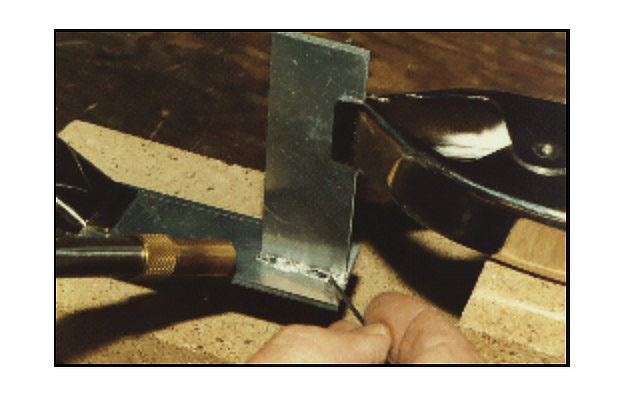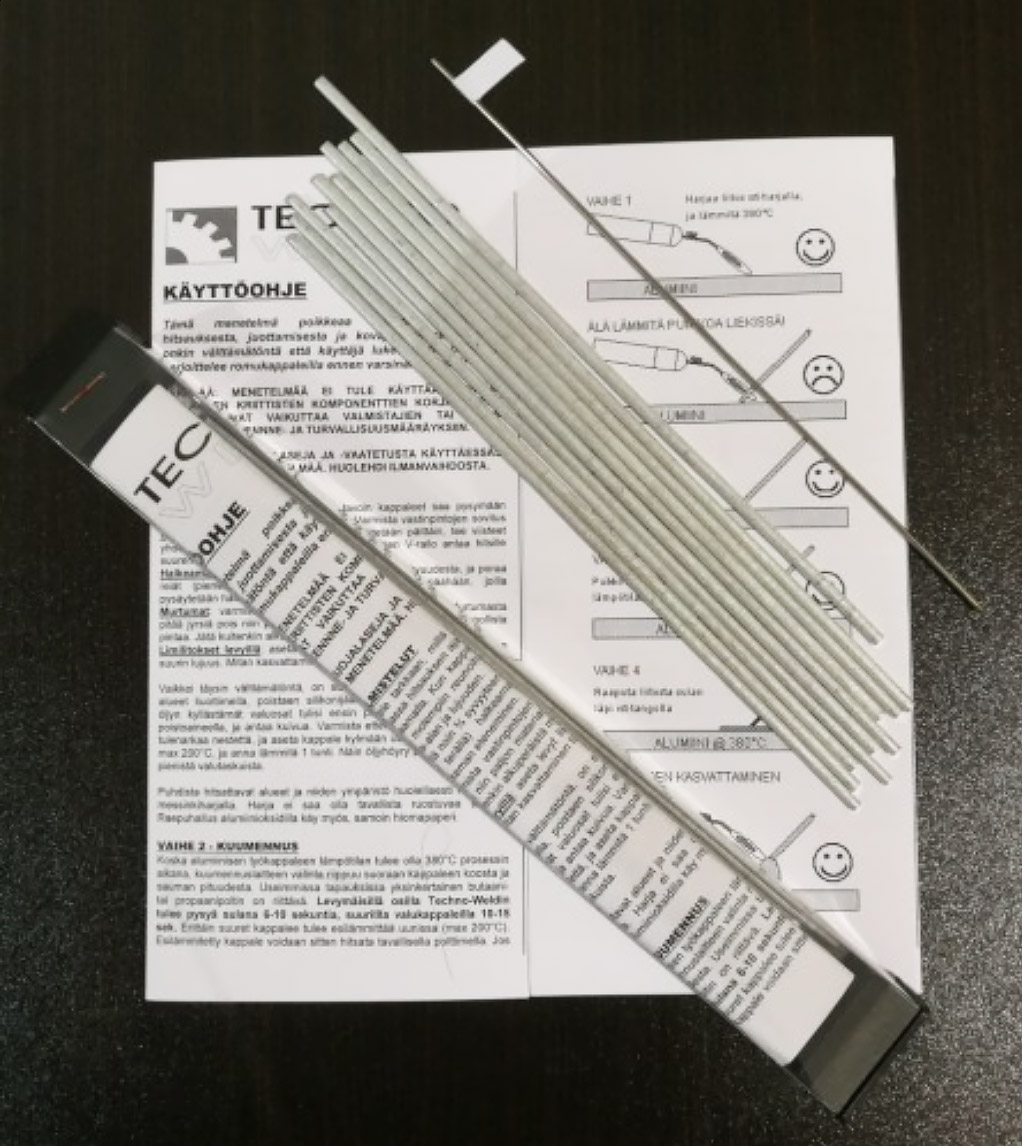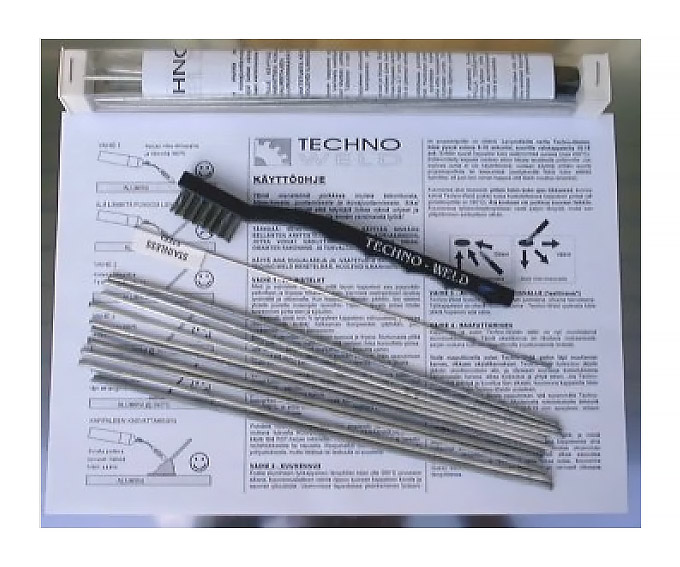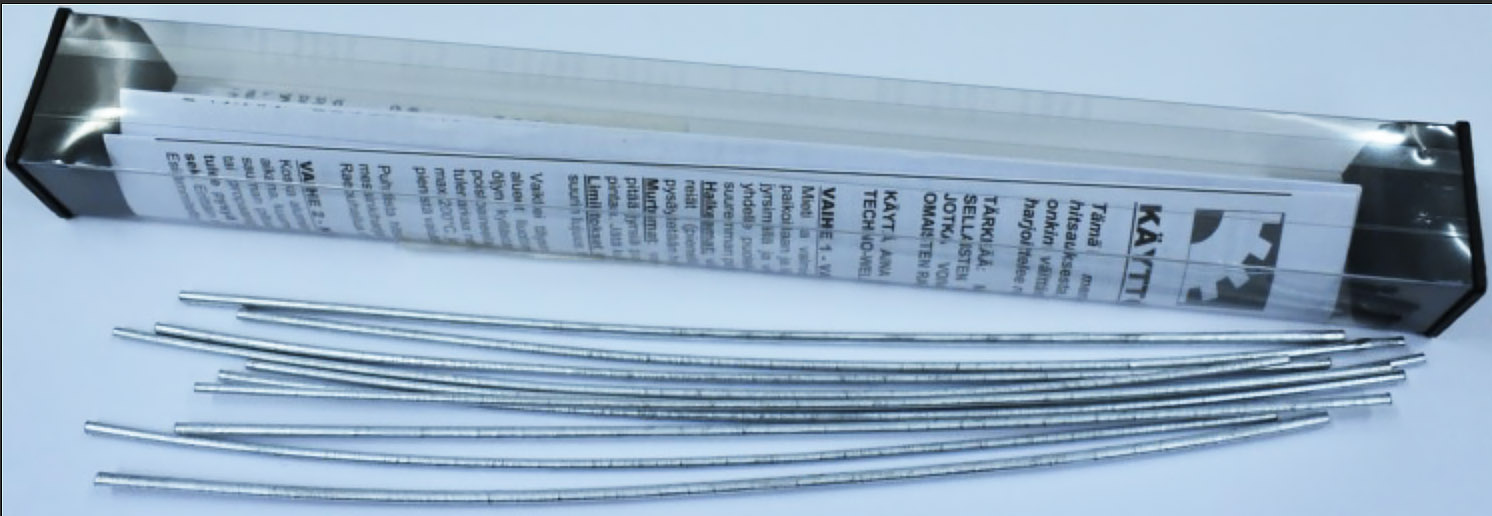Description
TECHNO-WELD Aluminum welding with a stick
How do I weld aluminum? Fortunately, aluminum welding can also be done at home with Technoweld’s clever fusion welding method, even without expensive special equipment. Welding with a Technoweld stick is similar to soldering, which is more familiar to many of us, and does not require shielding gas, flux or a separate welding device.

- Weld the aluminum parts firmly together
- You don’t need special equipment
- You don’t need shielding gas
- You don’t need previous special knowledge
How is welding done?
In a simplified way, you heat the seam to be welded with a gas torch, for example, and in this way, as if you solder the seam, by melting the Technoweld stick into the seam.
What materials is this method suitable for?
- Aluminum castings (cylinder heads, gearbox covers, etc.)
- Aluminum rods, profiles and plates
- Duralumin
- Mazak and zinc casting parts (handles, decorative parts, carburetors)
- Birmabrit (Land Rover bodies)
- Magnesium/aluminum castings
- Titanium
You can weld all these materials with this method, as well as different aluminum alloys. The welding rod melts at a temperature of 380°C, which is about 200°C below the melting temperature of aluminum. The resulting reaction raises the temperature locally between 600°C-800°C, where the Techno-Weld penetrates the base metal, but the temperature of the surrounding body still remains at 380°C. It is worth noting that this method does not spoil the heat treatment of aluminum from a wider area like TIG/MIG, the method is also called diffusion welding.
This product is suitable for all aluminum alloys, which is not the case for all competing products on the market. This is also evidenced by the fact that the product has e.g. NATO approval for use by land, sea and air forces (spec. 3439 90 002 9525)
Wouldn’t TIG welding be better though?
TIG is a very practical method, there is no denying it. But with certain exceptions, this method has its special strengths:
- you can fill the cylinder head channels (TIG does not fit)
- can weld very thin and sensitive walls, e.g. aluminum condenser tubes
- you can grow a STRONG stud bolt with a thread all the way to the bottom of the aluminum piece
(melt the stud inside the steel nut, and unscrew the nut when the piece has cooled) - you can also braze (but not weld) brass and copper to each other or to aluminum
- you can repair zinc castings or other similar low melting point alloys
- you can repair the internal thread without a threaded pin
(oversize the hole, fill it with molten material and drop a suitable bolt into the molten. Unscrew when the part has cooled, and you have new threads.)
How durable can you create a welding seam this way?
A good combination of tensile and shear strengths has been developed for this material, with which a strong connection is achieved and, on the other hand, high hardness without forgetting machinability. As a rule of thumb, the TECHNO-WELD joint becomes even stronger than the base metal. It is almost as hard as ordinary steel and can also be tapped and machined like any other metal.
The product has been tested with an aluminum/copper alloy (2000 series) and achieved a shear strength of 90% compared to the base metal, with the same value being only 70% with the traditional welding method. The joints can therefore be made as strong or stronger than the base metal, depending on the type of joint. The electrical conductivity is exactly the same as aluminum, and the thermal conductivity is almost the same.
In summary, the product is easy to use and very suitable for many applications. You can connect parts, fill holes or create brackets and new pieces.
As long as the joint can be heated to the required temperature of 380°C, and the joint surfaces have been properly cleaned and brushed – the end result is guaranteed.
Examples of applications
- Aluminum castings for cars and motorcycles: blocks, covers, cooling fins, lugs, gearboxes, auxiliary equipment
- Aluminum coolers and condensers
- Various aluminum brackets, threads, fasteners
- Boat parts, aluminum boats are a great target because Tecno-Weld is particularly resistant to protective water. The magnesium oxide layer that forms on the surface strongly protects the seam from corrosion. The product is great for boaters.
- Aluminum baskets: repairs and changes
- Zinc casting parts: carburetors, decorative parts, handles, etc
- Everyday home repairs: toys, decorative items, tools
- Construction: aluminum ladders, fences, gates, moldings, gutters, etc.
- Industry: refrigeration machines, pipes, air conditioning ducts, exhibition stands, signs, dish antennas, prototypes, maintenance of machines and equipment
What applications is Techno-Weld NOT suitable for?
Base metals that contain a large amount of silicon, such as so-called hypereutectic piston alloys are those where the joint may be weaker than expected. In anodized parts, it should be noted that the anodization must be removed before making the connection.
What material is Techno-Weld made of?
It is an alloy patented by Techno-Weld Ltd, operating in England, which is mainly based on zinc, with the addition of aluminum, copper, manganese, magnesium and other metals.
Reynolds Aluminum tested the strength of the joint, with aluminum grades 3003-H14 and 1100-H14. The T-joint was made using two 0.25 x 50 x 75 mm plates. The joint passed a 500-hour salt spray test with a 5% salt solution. Corrosion resistance depends on the operating environment. Tested at Eastern Seaboard, Long Island, NY, penetration rate reached 0.000762 mm/year. In very heavy industrial environments, the penetration rate reached 0.00173 mm/year. Techno-Weld can be expected to work well in environments where zinc or galvanized steel has been successfully used in the past.
Nipple information and numbers about the product
Melting point: 379 – 390°C
Working temperature: 392 – 495°C
Tensile strength over 345 N/mm2
Shear strength over 310 N/mm2
Actual shear strength of the joint over 170 N/mm2
Compressive strength over 620 N/mm2
Solid shrinkage: 1.2% (for die castings 0.3% – 0.6 %)
Hardness, Brinell: 97
Impact duration: Charpy 35 ft-lb
Coefficient of thermal expansion: 0.000762 mm/°C (25 – 105°C)
Electrical conductivity: 24.9% of that of copper
Resistivity: @ 20°C = 6.8 micro-ohm – cm
Density: @ 21°C = 6.7 g/cm3
Download the instructions for use for the Techno-Weld product here
Technoweld welding rod user manual (PDF)
Do you need aluminum connecting pieces and aluminum pipe ? See our product category.




Reviews
There are no reviews yet.